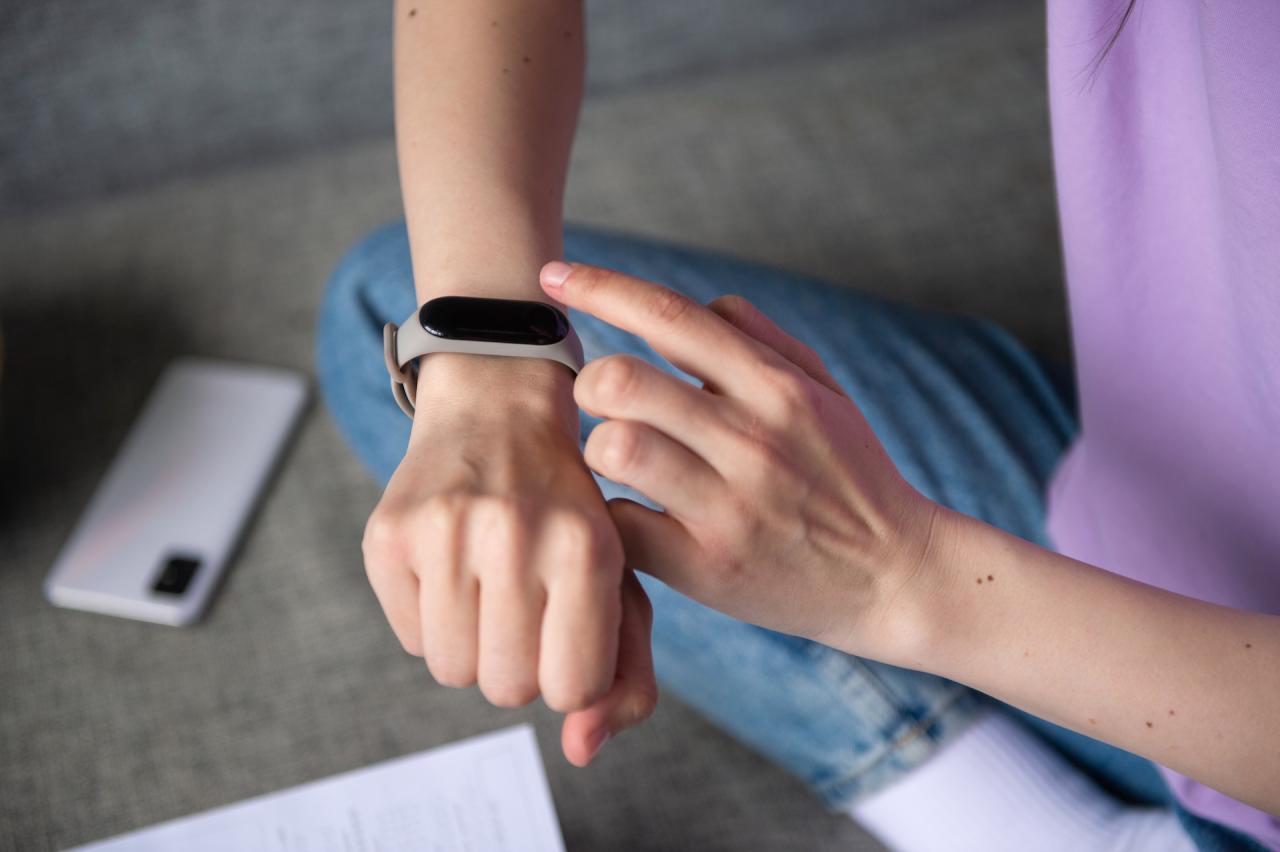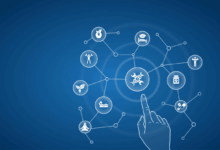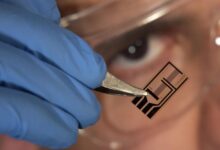Wearable Health Tech Provides Personalized Approach

The world of health and wellness is undergoing a radical transformation, driven by the proliferation of wearable health technology. What was once a simple fitness tracker has evolved into a sophisticated medical device, a personal health guardian that provides a continuous stream of biometric data. This revolution is fundamentally reshaping our relationship with our own health, moving us from a reactive, clinic-centric model of care to a proactive, personalized, and data-driven approach. This article will take a deep dive into the key drivers behind the wearable health tech revolution, exploring the most significant breakthroughs, their profound impact on disease management and prevention, the challenges of data privacy and accessibility, and the immense opportunities that lie ahead for a healthier and more equitable world.
From Step Counters to Lifesaving Devices

The journey of wearable tech from a niche gadget to a mainstream health tool has been a rapid and remarkable one. The technological advancements have been a game-changer, making these devices smaller, smarter, and more powerful than ever before.
A. The Power of Biometric Sensors
The core of any wearable health device is its array of advanced sensors. These tiny, non-invasive components can collect an incredible amount of data about our bodies in real-time.
- Heart Rate Variability (HRV): The latest smartwatches and rings can measure HRV, a key indicator of stress, recovery, and overall nervous system health. A lower HRV can signal a need for rest, while a higher HRV is often a sign of good health and readiness for a workout.
- Blood Oxygen Saturation (SpO2): Sensors that measure blood oxygen levels are becoming standard in many wearables. This is a critical metric for monitoring respiratory health, especially for individuals with conditions like sleep apnea or asthma.
- Electrocardiogram (ECG/EKG): Some smartwatches can now take a medical-grade ECG from a user’s wrist. This technology can detect atrial fibrillation (AFib), a common form of irregular heartbeat that can increase the risk of stroke. This is a massive step forward, as it allows for the early detection of a serious condition that often goes undiagnosed.
- Skin Temperature and Sleep Tracking: Advanced sensors can track changes in skin temperature, a key indicator of illness or a woman’s menstrual cycle. Coupled with sophisticated sleep tracking, these devices provide a holistic view of a person’s health, from the quality of their rest to the onset of a fever.
These sensors are turning our bodies into a continuous data stream, providing insights that were once only available in a doctor’s office or a hospital setting.
B. The Intelligence of AI and Machine Learning
The raw data from these sensors would be useless without the ability to analyze it. Artificial intelligence (AI) and machine learning (ML) are the brains of the wearable health revolution, turning billions of data points into actionable health insights.
- Predictive Health Analytics: AI can analyze a user’s long-term data to predict the onset of a health condition. For example, a continuous drop in HRV combined with poor sleep and an increase in resting heart rate could be an early warning sign of a viral infection or burnout.
- Personalized Coaching and Feedback: AI-powered apps can provide personalized recommendations for diet, exercise, and stress management based on a user’s unique biometric data. This creates a virtual health coach that is always available and tailored to the individual’s needs.
- Early Disease Detection: By continuously monitoring a user’s vital signs, AI can detect subtle anomalies that a human might miss. This can lead to the early detection of life-threatening conditions, from a cardiac event to a sudden drop in blood sugar.
This level of intelligent analysis is shifting the focus from treating illness after it has occurred to preventing it from happening in the first place.
Proactive and Personalized Care
The wearable health tech revolution is more than just about new gadgets; it is about a fundamental shift in the entire healthcare paradigm.
A. Remote Patient Monitoring (RPM)
For individuals with chronic diseases like diabetes, hypertension, or heart failure, wearable tech is a game-changer. Remote Patient Monitoring (RPM) allows a doctor to continuously monitor a patient’s vital signs from afar.
- Real-Time Data for Clinicians: Instead of relying on a once-a-year checkup, a doctor can receive a real-time stream of a patient’s blood pressure, blood glucose, or heart rhythm. This allows for more timely and precise adjustments to medication and treatment plans.
- Reduced Hospital Readmissions: By catching early signs of a deteriorating condition, RPM can reduce the need for costly and stressful hospital readmissions.
- Empowering Patients: Patients feel more in control of their own health when they have access to real-time data and can see the direct impact of their lifestyle choices on their health metrics.
B. The Rise of Personalized Wellness
Wearable tech is empowering a new generation of consumers to take a proactive approach to their wellness, not just their illness.
- Customized Fitness Programs: A wearable can track a user’s performance in a workout and provide real-time feedback and adjustments, creating a personalized training plan that adapts to their body’s readiness and recovery needs.
- Optimizing Sleep: By providing detailed data on sleep stages, quality, and patterns, wearables are helping people understand and improve their rest, a key pillar of overall health.
- Stress Management: Wearables that track HRV and other stress markers can alert a user when they are stressed and provide guided breathing exercises or meditation sessions to help them calm down.
This level of personalization is creating a new industry around holistic wellness, where technology is used to enhance every aspect of a person’s well-being.
Challenges and Opportunities

While the future of wearable health tech is bright, there are significant challenges that must be addressed to ensure its long-term success and positive impact.
A. Data Privacy and Security
The vast amount of sensitive personal and medical data collected by these devices is a prime target for cybercriminals. A major data breach could have devastating consequences for individuals and could erode public trust in the entire industry.
- Regulatory Hurdles: Governments and regulatory bodies must create and enforce strict regulations to protect user data and hold companies accountable for its security.
- User Control: Users must have full control over their own data, including who can access it and for what purpose. Transparency and a clear consent policy are essential.
B. The Digital Health Divide
While wearable tech has the potential to democratize healthcare, there is a real risk of creating a new digital health divide between those who can afford and access these technologies and those who cannot.
- Cost of Devices: The most advanced wearables are still expensive, putting them out of reach for a significant portion of the global population.
- Digital Literacy: A significant portion of the population, particularly the elderly, may lack the digital literacy to fully engage with and benefit from health tech platforms and devices.
C. The Human Element
While AI and data are powerful tools, they cannot replace the judgment of a trained medical professional. There is a need for a clear understanding of when to trust the technology and when to consult with a doctor. The future of healthcare will be a hybrid model that combines the efficiency and data of technology with the empathy and experience of a human clinician.
Conclusion
The wearable health tech revolution is a seismic shift that is fundamentally redefining our relationship with medicine. The era of a one-size-fits-all approach is ending, replaced by a personalized, preventative, and predictive model of care. The evolution of a simple fitness band into a sophisticated medical device with the ability to take a medical-grade ECG and monitor a continuous stream of biometric data is nothing short of extraordinary. The power of artificial intelligence is not just a tool; it is becoming an indispensable partner, enabling us to predict and prevent illness and to receive personalized health coaching that is tailored to our unique needs. Telemedicine, now integrated with data from wearables, is shattering geographical barriers, making quality care more accessible and equitable than ever before.
However, the journey to a fully realized wearable health tech future is not without its challenges. The collection of vast amounts of sensitive data raises profound questions about privacy and security, demanding new regulatory frameworks and a greater commitment to user control. The risk of a new digital health divide, where the benefits of this technology are concentrated in the hands of a few, must be addressed through a clear commitment to accessibility and affordability. Ultimately, the future of health is not just about treating disease; it is about building a proactive, preventative, and personalized ecosystem of care that empowers every individual to live a healthier and longer life. This is not just a technological revolution; it is a human one, and it is happening now.


